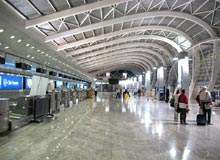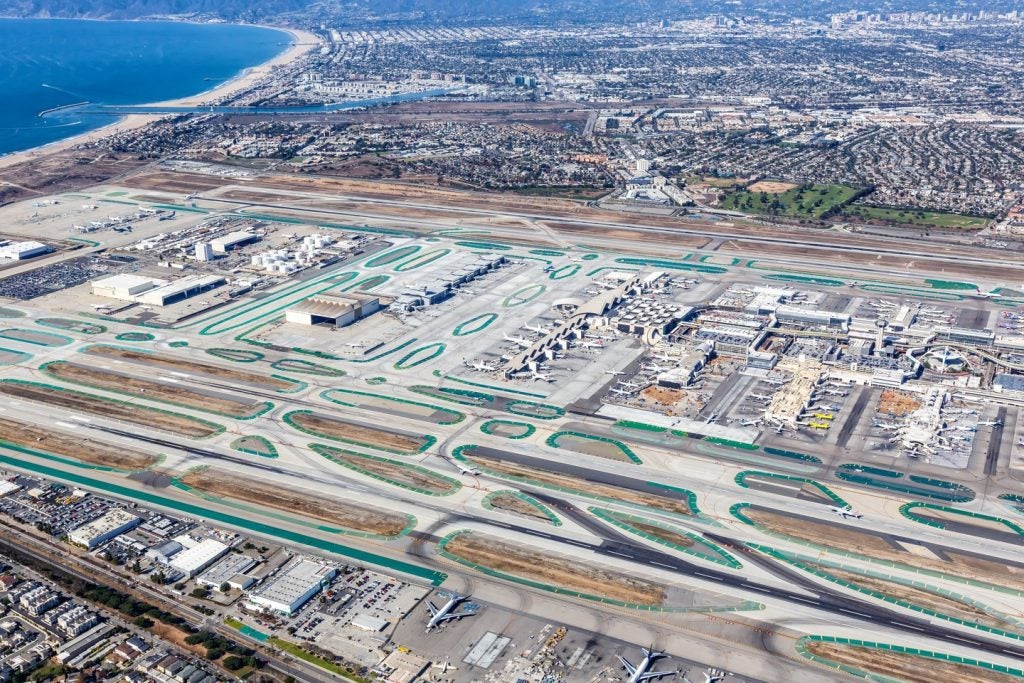
The opening decade of the 21st century has ushered in a period of change throughout the aviation industry.
Not only is there the increased threat of terrorism, escalating fuel prices, burgeoning passenger numbers and the rise of the carbon-offset concept, commercial pressures across the sector have steadily mounted.
Airport projects are being driven by the same optimal cost / benefit balance which has seen the airlines re-appraise much of their operations. Amid the parlous funding situation of the current general economic climate, a new approach has steadily been gaining momentum.
DESIGN-BUILD BENEFITS
Unlike more familiar project delivery systems such as the design-bid-build (DBB) and construction manager at risk (CM@R) models, instead of hiring a separate designer and builder, the design-build (DB) approach sees the project owner contract with just one entity.
See Also:
This may be a single company, a consortium, purpose-made JV or – as seems to be increasingly common – a team of unrelated firms.
How well do you really know your competitors?
Access the most comprehensive Company Profiles on the market, powered by GlobalData. Save hours of research. Gain competitive edge.

Thank you!
Your download email will arrive shortly
Not ready to buy yet? Download a free sample
We are confident about the unique quality of our Company Profiles. However, we want you to make the most beneficial decision for your business, so we offer a free sample that you can download by submitting the below form
By GlobalDataIn essence, rather than forming disparate elements, project design and construction become complementary halves of a unified single process, to be planned and executed as a whole.
This one key change is central to defining the system’s principal advantages. By eliminating the separation of responsibility between design and construction, DB establishes a single point of accountability and thereby significantly simplifies the project sponsor’s role. As a result, with the owner no longer required to coordinate between a design professional and construction contractor – or mediate their disputes – lines of communication remain direct, reducing much of the potential avenues for misunderstandings to arise.
The main benefit of DB lies in speed and economy, and this principally results from the presence of both design and construction skill-sets from the outset. As DeWayne Ables, the founder and president of DVA Marketing, explained at the Design / Build Institute of America conference, “it allows a more cohesive approach to developing solutions because the architect, engineer, contractor, property owner and perhaps even the banker meet together at the same table.”
The level of cooperative problem solving that this enables represents a major cost saving and with design and construction phases often overlapping – since the design does not have to be completed in its entirety before works get under-way – the project is effectively fast tracked. Economy is further served by project specifications that are performance based instead of prescriptive, allowing the design to be shaped according to the DB team’s best methods and experience, rather than being shoe-horned into particular generic construction techniques.
The idea itself is not new; it is essentially the same as the engineer-procure-construct (EPC) and turnkey approaches encountered in a number of other industries and in many ways it harks back to the days of the ‘master builder’ Its growing popularity among the airports of the world, however, gives it something of a new twist.
SUCCESS STORIES
A Penn State University study established that for a range of construction projects in the US, the average unit costs for DB are around 5% lower than the more conventional approaches and around 30% faster.
At a cost of around $1bn and being the largest DB airport programme in the US – the Chicago O’Hare terminal 6 (T6) programme is perhaps one of the most significant projects in the US. The City of Chicago opted to go down the DB route for the new 70,000m² terminal after it became clear, during the previous T5 programme, the design simply could not be realised for the available budget, resulting in cost over-runs. Competitive bidding led to the selection of T6 partners – a Bechtel-led JV including, six local design and contracting companies.
The choice is hardly unexpected, given that Bechtel have been identified as the top DB firm in the United States and have established Alterra Partners specifically to develop, construct, own and operate airport projects around the world. Amongst their global success stories are the Costa Rica’s Juan Santamaria Airport terminal expansion and the first major DB project in South America – the upgrading of Peru’s Lima Jorge Chavez Airport.
Other players have not been slow to grasp the unique commercial advantages that a DB-led business environment can offer.
International Aviation Consultants, for example, are the JV responsible for programme management services to the City of Atlanta during its five-year expansion of the Hartsfield-Jackson Atlanta International Airport.
On a smaller scale, the DB ethos has also filtered down to airport systems; in 2007, Siemens was awarded a $12.6m contract by LP Ciminelli to design and build the new baggage handling system for Buffalo Niagara International Airport. From large projects to the relatively small, the DB approach has – in the words of independent industry analyst, Pieter Boorger, “a clear resonance with the global needs and realities of the economic environment of today’s airport operations.”
FOLLOWING THE DB ROUTE
For anyone in airport management, the appeals of DB are clear, not least because of the system’s extraordinary record of savings – and they have been considerable. When, for example, the Alberici / Walsh / PBM Concrete JV built the largest, single-phase construction parking structure in the US for Northwest Airlines at Detroit Metro Wayne County Airport, the reduction in construction cost was put at over $15m.
However, it is not just a question of making savings; while DB certainly offers the promise of low-cost delivery, it is perhaps as much a question of providing enhanced value. As a consequence, choosing to go down the DB route inevitably makes its own demands of the project sponsor.
For those previously well-versed in alternative project delivery systems, the minimal day-to-day involvement with decision-making and resource management may initially prove a little disconcerting, although ultimately its value usually becomes clear. One requirement which is inescapable, however, is the need for a carefully prepared and fully comprehensive performance specification, since this effectively forms the defining criterion for the DB team.
This obviously also means that the sponsor needs to avoid making design changes and preferences that do not form part of the performance specification issued at the time of contract award. For anyone moving to DB from DBB / CM@R routes, this may prove a difficult adjustment, at least at first.
Another issue to be borne in mind is that because the cost of the preparatory work prior to bidding is relatively high compared with the more usual DBB approach, the numbers of suitably qualified bidders may be significantly cut, acting as a disincentive to competition.
Although the DB route is not suitable for all applications, empirical experience and the wisdom of the market suggests that for a wide range of airport projects – particularly expansions, engineering improvements and technology upgrades – it certainly has its place. Exactly how far this currently growing trend will go remains to be seen, but given the unique combination of its innate benefits and the particular set of circumstances surrounding the industry today, it is hard to see why its future should be anything other than assured.






